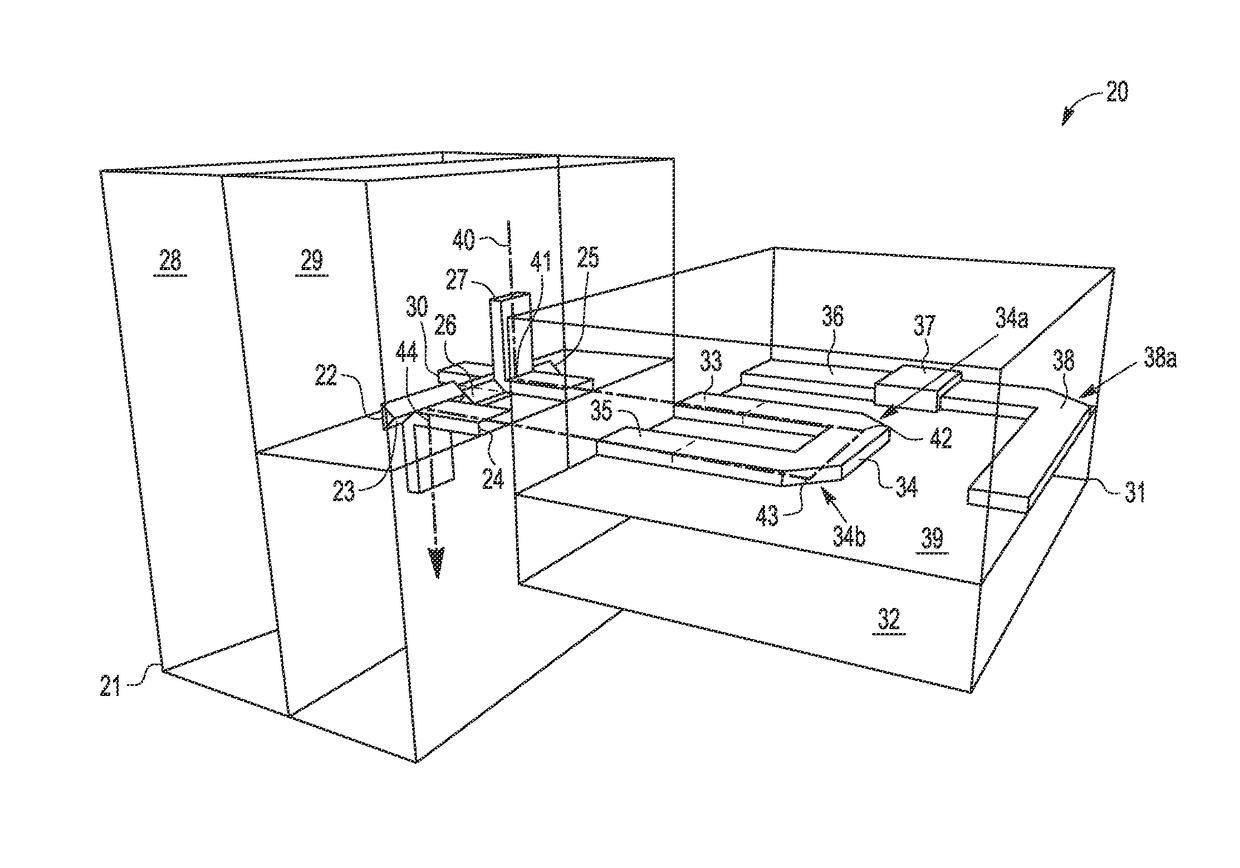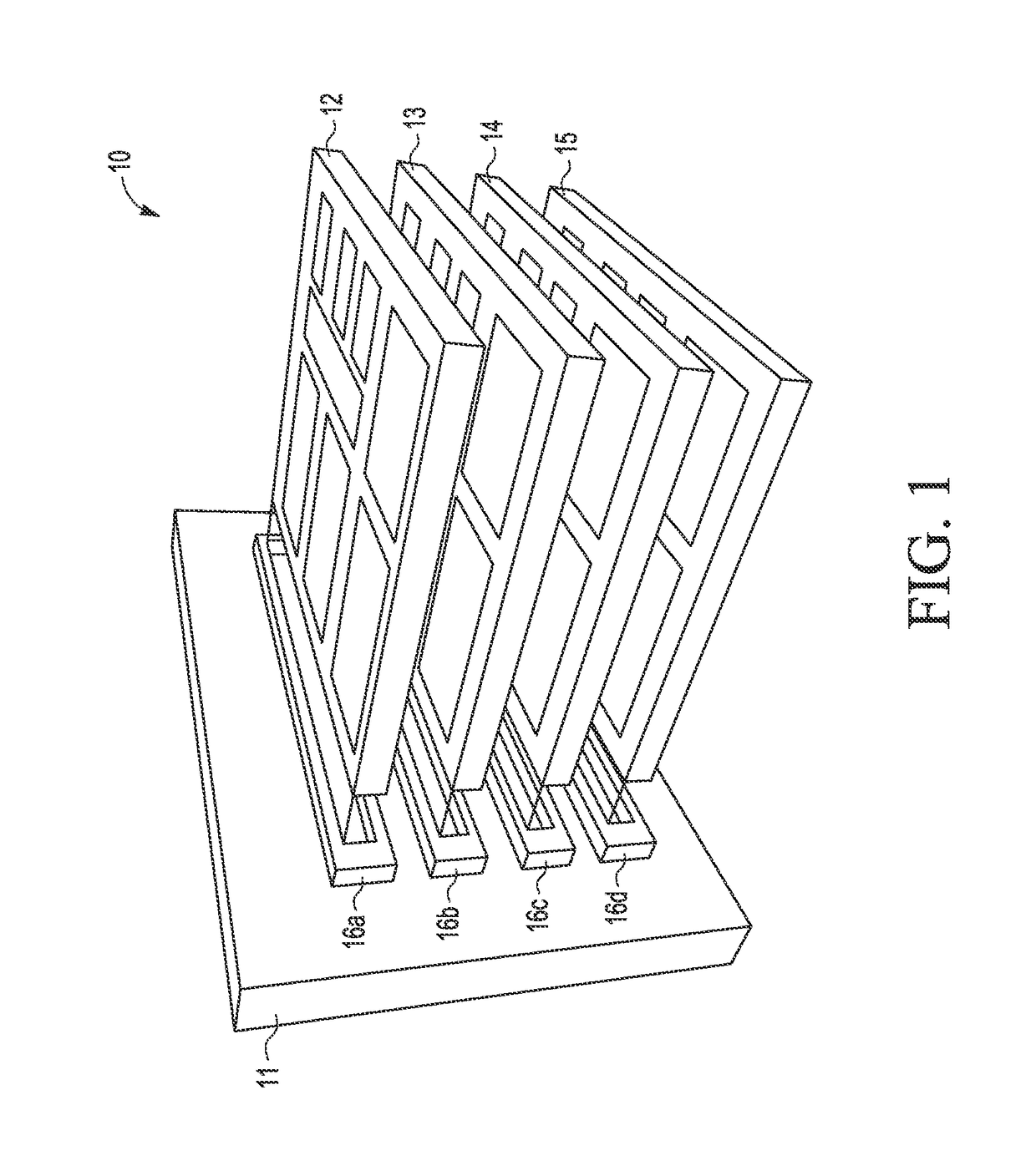Optical backplane mirror
a backplane mirror and optical technology, applied in the field of optical backplane mirrors and fabrication of optical interface structures, can solve the problems of reducing coupling efficiency, transmission failure, and integrating optical interconnects
- Summary
- Abstract
- Description
- Claims
- Application Information
AI Technical Summary
Benefits of technology
Problems solved by technology
Method used
Image
Examples
Embodiment Construction
[0019]There are disclosed herein improved optical communication systems, methods, and apparatus that address various problems in the art where various limitations and disadvantages of conventional solutions and technologies will become apparent to one of skill in the art after reviewing the remainder of the present application with reference to the drawings and detailed description provided herein. In selected embodiments, a high density, low power, high performance information system, method and apparatus are described in which integrated optical communications are provided by forming an integrated circuit die with optical mirror structures to move optical signals through and around one or more integrated circuit die mounted or communicating with the integrated circuit die. In embodiments where one or more vertical die or die stacks are mounted on an optical backplane die, optical connections between different die are providing by using bulk silicon micromachining technology to fab...
PUM
 Login to View More
Login to View More Abstract
Description
Claims
Application Information
 Login to View More
Login to View More - R&D
- Intellectual Property
- Life Sciences
- Materials
- Tech Scout
- Unparalleled Data Quality
- Higher Quality Content
- 60% Fewer Hallucinations
Browse by: Latest US Patents, China's latest patents, Technical Efficacy Thesaurus, Application Domain, Technology Topic, Popular Technical Reports.
© 2025 PatSnap. All rights reserved.Legal|Privacy policy|Modern Slavery Act Transparency Statement|Sitemap|About US| Contact US: help@patsnap.com



